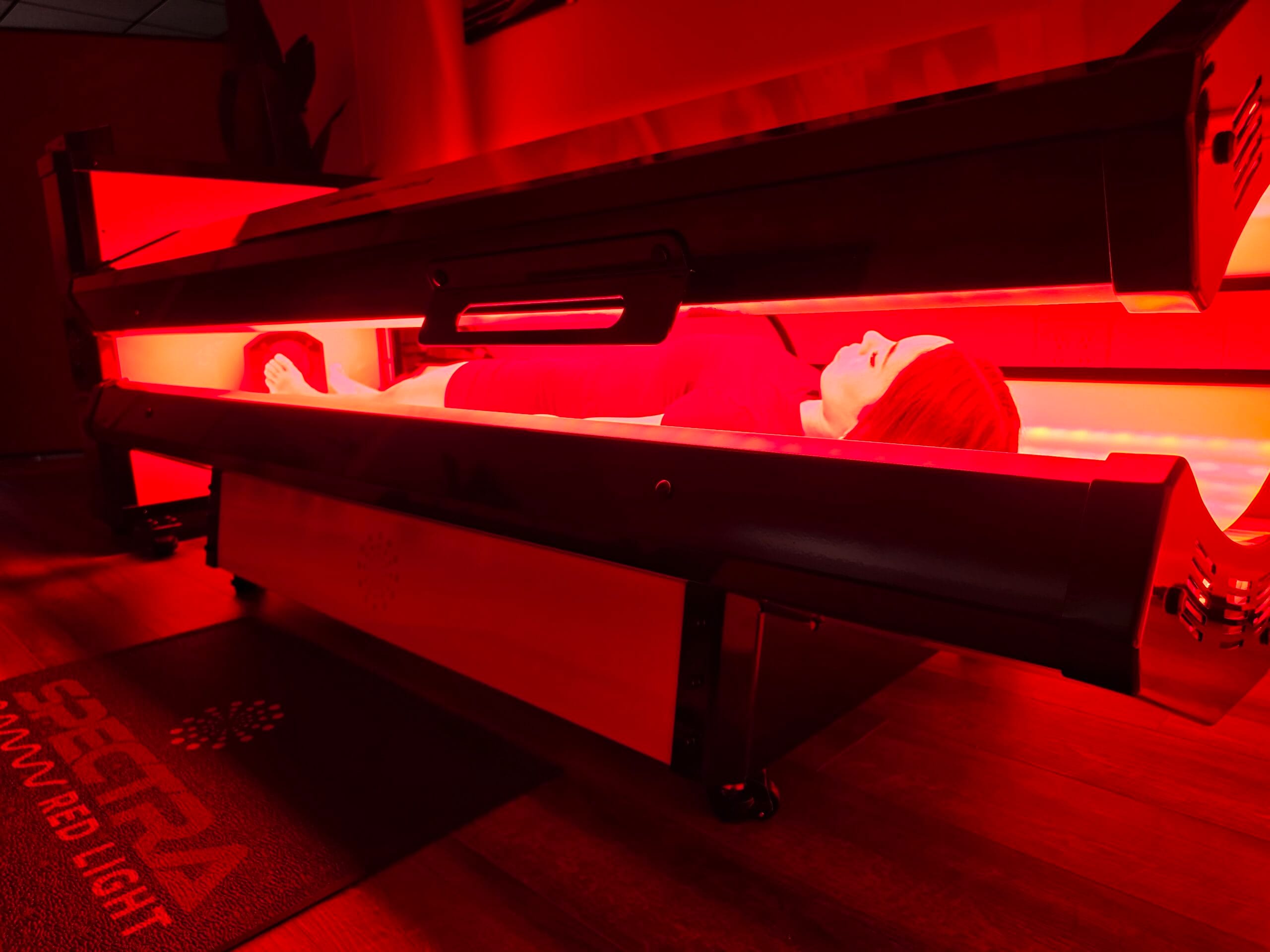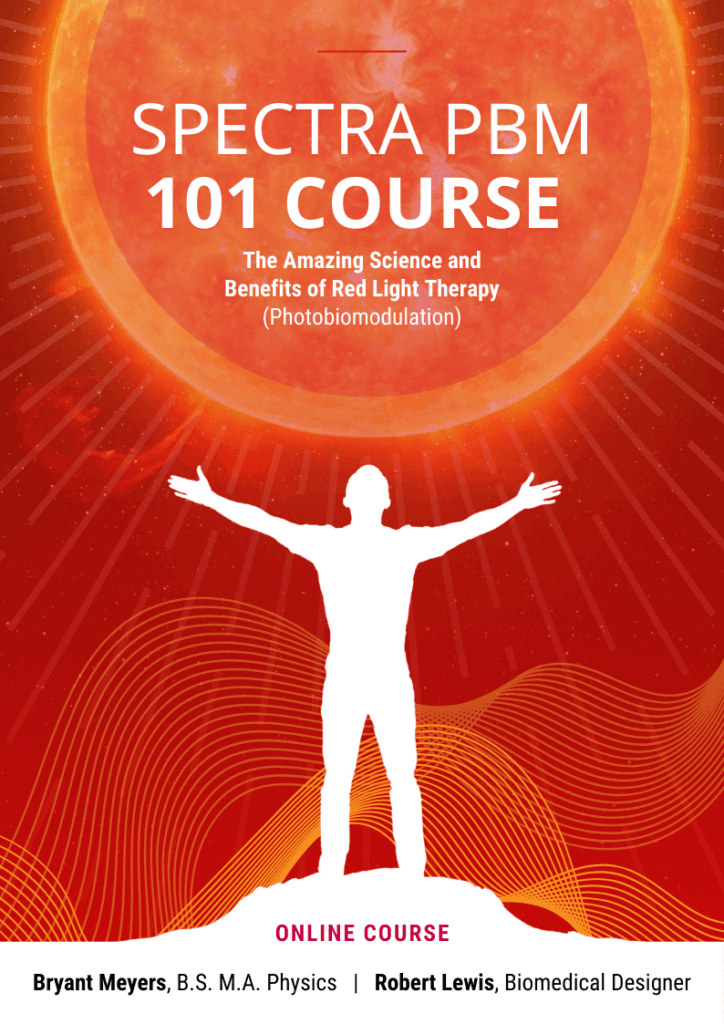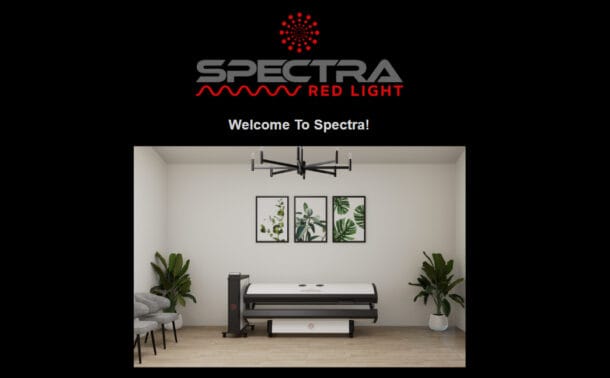According to the Centers for Disease Control and Prevention (CDC), an estimated 4.5 million adults in the United States have been diagnosed with chronic liver disease, including conditions such as non-alcoholic fatty liver disease (NAFLD), hepatitis, and cirrhosis.¹ The liver plays a central role in over 500 essential biological processes, including detoxification, metabolic regulation, bile production, and the synthesis of vital proteins. Given its critical function and constant exposure to internal and external stressors, maintaining optimal liver health is essential for systemic well-being.
Red Light Therapy (RLT), a form of photobiomodulation, is emerging as a promising modality to support liver function at the cellular level. Rather than relying on pharmaceuticals or invasive procedures, RLT utilizes specific wavelengths of red and near-infrared light to stimulate beneficial biological effects in tissues exposed to light energy. When applied over the liver region, these wavelengths penetrate deep into the tissue and are absorbed by mitochondrial chromophores, particularly cytochrome c oxidase (CcO). This interaction enhances mitochondrial respiration and increases adenosine triphosphate (ATP) production, providing hepatocytes with the energy required for regeneration, detoxification, and metabolic regulation.
In addition to energizing liver cells, RLT helps to modulate oxidative stress and inflammation, two key drivers of liver dysfunction. By reducing reactive oxygen species (ROS) and downregulating pro-inflammatory cytokines such as tumor necrosis factor-alpha (TNF-α) and interleukin-6 (IL-6), Red Light Therapy fosters a biological environment conducive to healing and resilience. The enhanced microcirculation triggered by light-induced nitric oxide (NO) release further supports hepatic oxygenation and nutrient delivery.
This article explores the physiological mechanisms, preclinical findings, and practical applications of Red Light Therapy for enhancing liver health, offering insight into how this non-invasive, scientifically grounded approach may become a valuable part of a comprehensive liver support strategy.
The Science of Liver Function and Cellular Stress
The liver is the body’s largest internal organ and one of its most metabolically active. It performs over 500 physiological functions essential for maintaining health and homeostasis. Among its primary roles are the detoxification of harmful substances, regulation of glucose and lipid metabolism, synthesis of plasma proteins, bile production for digestion, and storage of essential nutrients such as glycogen, vitamins, and minerals. This complex biochemical activity makes the liver central to nearly every system in the body, from immune function and digestion to hormonal balance and energy regulation.
Because of its high metabolic demand, the liver is particularly vulnerable to oxidative stress, inflammation, and mitochondrial dysfunction. These stressors are commonly triggered by modern lifestyle factors such as poor diet, alcohol consumption, environmental toxins, sedentary behavior, and chronic infections. Over time, these insults can impair hepatocyte function, disrupt cellular energy production, and lead to liver conditions such as non-alcoholic fatty liver disease (NAFLD), fibrosis, or chronic inflammation.
At the cellular level, liver dysfunction often begins with an imbalance between the production of reactive oxygen species (ROS) and the body’s antioxidant defenses. Excess ROS leads to lipid peroxidation, protein oxidation, and DNA damage within hepatocytes, compromising their viability. This oxidative stress activates inflammatory signaling pathways, such as nuclear factor-kappa B (NF-κB), resulting in the release of pro-inflammatory cytokines like TNF-α and IL-6. These molecular changes impair liver regeneration, reduce detoxification capacity, and further strain the body’s metabolic balance.
This is where Red Light Therapy (RLT) offers a novel, non-invasive support strategy. By applying specific wavelengths of red and near-infrared light to the liver area, RLT interacts with the mitochondrial electron transport chain, particularly the enzyme cytochrome c oxidase, to enhance ATP synthesis and support cellular respiration. This energy boost helps restore optimal function to stressed hepatocytes and supports their natural regenerative processes.
Moreover, RLT has been shown to modulate oxidative stress by triggering the upregulation of endogenous antioxidant systems, including superoxide dismutase (SOD) and glutathione peroxidase. This helps neutralize excess ROS and protect cellular structures from damage. Simultaneously, RLT exerts an anti-inflammatory effect by reducing cytokine expression and inhibiting pro-inflammatory signaling, contributing to a more stable and healthy liver microenvironment.
In short, maintaining liver health at the cellular level means optimizing mitochondrial function, minimizing oxidative stress, and reducing chronic inflammation, all of which are physiological mechanisms directly influenced by Red Light Therapy. By supporting these foundational processes, RLT holds promise as an accessible and powerful modality to protect and enhance liver function for those seeking holistic wellness. Try our Red Light Bed Dose Calculator for more optimal results.

Mechanism of Action: How Red Light Therapy Supports Liver Function
Red Light Therapy (RLT), also known as photobiomodulation, works at the intersection of physics and cellular biology. Its physiological benefits are driven by specific wavelengths of light that penetrate tissue and stimulate beneficial biological responses without causing heat or damage. When applied over the liver region, this light energy initiates a cascade of cellular events that support and enhance liver function.
Mitochondrial Activation and ATP Production
At the core of RLT’s effectiveness is its interaction with the mitochondria, the cell’s energy-generating structures. Within the mitochondrial electron transport chain, the enzyme cytochrome c oxidase (CcO) acts as a primary photoacceptor for red and near-infrared light. When these wavelengths are absorbed, CcO activity increases, leading to enhanced electron transfer, elevated proton gradient across the inner mitochondrial membrane, and ultimately, greater synthesis of adenosine triphosphate (ATP), the cellular energy currency.
For hepatocytes, or liver cells, this increase in ATP availability is critical. The liver’s metabolic demands are immense, and improved energy production supports essential functions such as detoxification, lipid metabolism, enzyme synthesis, and cellular repair. Enhanced mitochondrial performance also supports the regeneration of liver tissue, especially in conditions characterized by cellular stress or damage.
Modulation of Oxidative Stress
The liver is frequently exposed to high levels of reactive oxygen species (ROS) due to its role in detoxifying xenobiotics, metabolizing fats, and processing inflammatory molecules. While ROS plays a role in cell signaling, excessive accumulation leads to oxidative damage of lipids, proteins, and nucleic acids, contributing to liver inflammation and disease progression.
Red Light Therapy helps to rebalance oxidative homeostasis by stimulating the production of endogenous antioxidant enzymes, including superoxide dismutase (SOD), catalase, and glutathione peroxidase. This activation reduces intracellular ROS levels and protects hepatocytes from oxidative injury. By restoring redox balance, RLT not only protects liver cells from damage but also creates a biochemical environment conducive to healing and function.
Anti-Inflammatory Effects
Chronic inflammation is a hallmark of many liver disorders, including non-alcoholic steatohepatitis (NASH) and hepatitis. Inflammatory signaling pathways, particularly NF-κB and MAPK, are often upregulated in stressed or diseased liver tissue, leading to the production of pro-inflammatory cytokines such as TNF-α, IL-1β, and IL-6.
Red Light Therapy has been shown to downregulate inflammatory gene expression and reduce the synthesis of these cytokines. This is achieved by altering the activity of key transcription factors and reducing oxidative triggers that perpetuate inflammation. The result is a reduction in hepatocellular inflammation, less tissue damage, and improved capacity for liver regeneration.
Improved Microcirculation and Oxygen Delivery
Effective liver function depends on robust blood flow to supply oxygen and nutrients while removing metabolic waste. RLT stimulates the release of nitric oxide (NO) from mitochondrial and endothelial sources, a molecule known to promote vasodilation and microvascular circulation.
This localized increase in blood flow enhances hepatic perfusion, improving the delivery of oxygen and critical nutrients to liver tissue. Better circulation also supports detoxification pathways and the removal of inflammatory byproducts, helping the liver maintain its vital roles in systemic homeostasis.
By targeting these foundational mechanisms, energy production, oxidative balance, inflammation modulation, and microvascular circulation, Red Light Therapy offers a powerful, science-backed approach to supporting liver health. This multi-faceted cellular stimulation empowers the liver to function more efficiently, recover from stress, and maintain its essential role in the body’s internal ecosystem.

Preclinical and Clinical Evidence of Red Light Therapy for Better Liver Function
While Red Light Therapy (RLT) is widely recognized for its role in musculoskeletal recovery, skin rejuvenation, and neurological support, a growing body of preclinical and clinical evidence suggests that its biological benefits may extend to hepatic health as well. Research involving cell culture models, animal studies, and early human trials has begun to shed light on how photobiomodulation (PBM) may positively influence liver function, regeneration, and metabolic processes.
Enhanced Hepatocyte Function in Preclinical Models
Preclinical research using liver spheroids, three-dimensional clusters of liver cells that mimic in vivo hepatic function, has provided compelling evidence of RLT’s impact on hepatocyte performance. In a 2021 study titled Synergistic effect of three-dimensional coculture and photobiomodulation therapy on vascularized liver spheroid formation by stem cells, researchers observed that PBM significantly enhanced the functional output of liver spheroids over time. Specifically, they reported:
“Albumin secretion by PBM-treated liver spheroid was higher on Day 28 compared with liver spheroid-seeded transplant group.” ´[2]
Albumin is a major protein synthesized by the liver, and its production is considered a key biomarker of hepatic biosynthetic capacity. This increase in albumin output reflects enhanced hepatocyte activity, improved metabolic function, and sustained tissue viability, all signs of a positive photobiomodulatory effect on liver health.
Modulation of Bile Acid Metabolism in Human Studies
Although limited, some early clinical data suggest RLT may influence hepatic metabolic pathways in humans. In a study titled Effects of phototherapy on hepatic function in human alcoholic cirrhosis, investigators examined the effects of light exposure on patients with liver disease. While intrinsic liver function showed only modest improvements, the study highlighted a noteworthy metabolic response:
“Phototherapy causes little improvement in intrinsic liver function, but produces specific changes in bile acid metabolism; these changes may be related to effects of light on a cutaneous bile acid pool.” [3]
These findings suggest that even without directly targeting the liver, systemic or transcutaneous light exposure may influence hepatic processes via cutaneous-liver signaling pathways or photochemical effects on circulating metabolites. Bile acids are critical regulators of lipid metabolism, detoxification, and cellular signaling, and their modulation through light exposure may represent a novel mechanism of action worth further exploration.
Existing preclinical and early human evidence provides a compelling case for Red Light Therapy as a supportive tool for liver function. Its influence on hepatocyte bioactivity, metabolic regulation, and oxidative balance presents a promising avenue for those seeking non-invasive strategies to protect and revitalize the liver.

The liver’s ability to metabolize, detoxify, and regenerate is fundamental to overall health, yet modern lifestyles and environmental exposures often place it under constant physiological stress. Red Light Therapy (RLT), through its precise activation of mitochondrial pathways, offers a scientifically grounded and non-invasive way to support and enhance liver function at the cellular level.
By delivering targeted wavelengths of red and near-infrared light to the upper abdominal region, RLT stimulates cytochrome c oxidase in the mitochondrial respiratory chain, boosting adenosine triphosphate (ATP) production and cellular energy availability in hepatocytes. This enhanced bioenergetic state fuels critical liver processes, from protein synthesis and detoxification to lipid metabolism and tissue regeneration.
Equally important, RLT helps to restore redox homeostasis by activating endogenous antioxidant defenses, reducing harmful reactive oxygen species (ROS), and protecting hepatocytes from oxidative injury. The therapy also suppresses inflammatory signaling pathways, such as NF-κB, thereby lowering the expression of pro-inflammatory cytokines like TNF-α and IL-6, which are commonly elevated in liver dysfunction. Moreover, improved microvascular circulation resulting from increased nitric oxide (NO) release ensures better oxygenation and nutrient delivery to liver tissue.
RLT is a powerful adjunct for liver support. Whether addressing subclinical inflammation, enhancing metabolic resilience, or supporting recovery from oxidative damage, Red Light Therapy offers a promising addition to comprehensive liver wellness strategies.
By harnessing the biological power of light, individuals now have access to a safe, research-backed modality that supports one of the body’s most vital organs—naturally, gently, and effectively.
References
[1] Centers for Disease Control and Prevention (CDC). Chronic Liver Disease and Cirrhosis. National Center for Health Statistics. Available at: https://www.cdc.gov/nchs/fastats/liver-disease.htm (Accessed July 9, 2025).
[2] Park IS. Synergistic effect of three-dimensional coculture and photobiomodulation therapy on vascularized liver spheroid formation by stem cells. J Cell Physiol. 2021 Aug;236(8):5865-5874. doi: 10.1002/jcp.30270. Epub 2021 Jan 11. PMID: 33432611.
[3] Knodell RG, Cheney H, Ostrow JD. Effects of phototherapy on hepatic function in human alcoholic cirrhosis. Gastroenterology. 1976 Jun;70(6):1112-6. PMID: 1269871.


